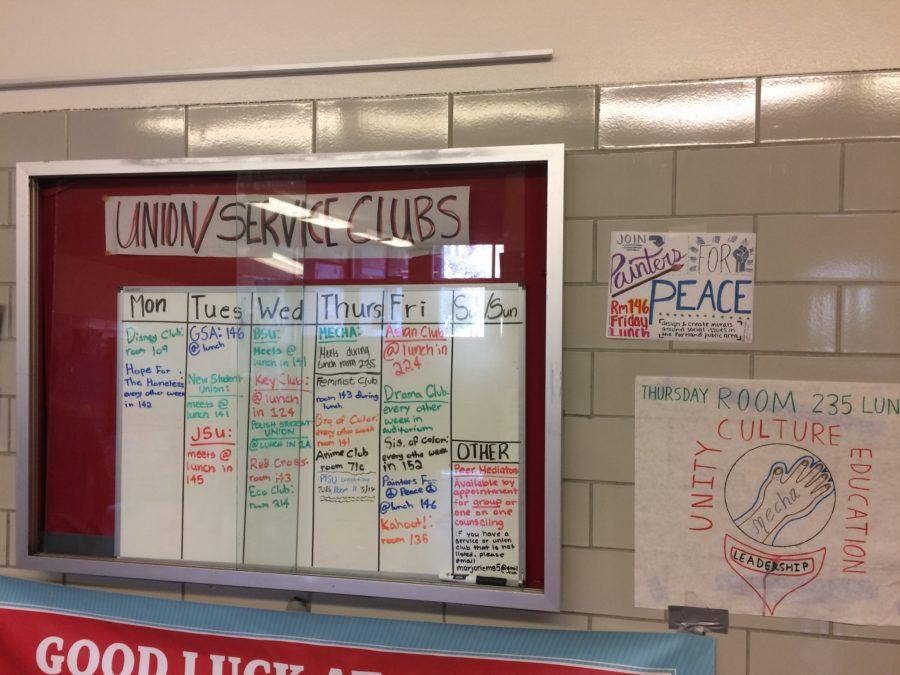Race relations at LHS have a ways to go
It’s no secret that Portland is a very white city. According to the U.S. Census Bureau’s most recent numbers, Portland is 76.1 percent Caucasian, 9.4 percent Latino, 7.1 percent Asian, and 6.3 percent Black.
This is hardly surprising, taking into account Oregon’s history of exclusion laws, which targeted Blacks and Asians well into the 20th century and actively discouraged them from living here.
But it does raise an interesting question: What negative effects does the lack of diversity in Portland — and at Lincoln High School, specifically — have on the social and academic scene in our school?
And beyond that, what solutions do we have to rectify that situation?
With that in mind, I recently interviewed several students at our majority white institution. What I found was that efforts are being made — but are they enough?
While two of the white males I interviewed said they had close friends who were people of color, the majority of those interviewed said they did not. When asked about why this might be, senior Charlie Hay said it was a matter of “circumstance,” and claimed that if “I went to a school that wasn’t 74 percent white, I would definitely have more friends of color.”
However a larger black population simply isn’t the reality at Lincoln. When asked how many black students there were in all eight of her classes, junior Diane Erickson claimed that out of the roughly 200 students she went to class with throughout the week, only 9 of them were black students.
It’s no surprise that high school is full of cliques, however in 2017, 63 years after school segregation was deemed unconstitutional, there is a certain element of surprise when one considers that these teenage cliques are still segregated by race as well.
“I’ve eaten lunch in the library, auditorium, and sometimes the cafeteria,” says junior Diane Erickson, “And from what I can tell friend groups seem very segregated, in terms of white and black students that is.”
However, senior Collette Jesson feels that while Lincoln is definitely racially unbalanced, the social scene remains “fairly integrated.” However she does agree that “minority groups may find more friends with their own community because they relate in their struggles.”
However, Lincoln hopes to challenge this by educating the masses about the racial struggles minorities face in an effort to further integrate our school. The creation of safe places such as BSU (Black Student Union) and ASU (Asian student union) are just some of the ways Lincoln hopes to combat any forms of social segregation.
It can also happen in the classroom. Classes such as Ethnic Studies and Critical Race Studies offer a syllabus geared towards understanding and open conversations. These classes make both students of color and those of white heritage more aware of ignorance of racial issues, especially when it comes in the form of microaggressions.
“Honestly I wasn’t fully educated on what [microaggressions] were beforehand,” said Hay, but after his Critical Race Studies class, “I recognize them a lot more and they certainly go on here at Lincoln.”
Out of the 10 students interviewed for this story, the only students who said they had witnessed microaggressions were those who had enrolled in a Critical Race Studies or Ethnic Studies class. When asked what Lincoln should do in order to rectify social segregation and bring microaggressions to light, many students mentioned that the solution was a more diverse population to start with.
If Lincoln was able to open up the school district lines into “different neighborhoods who aren’t predominantly from the west hills,” said Hay, there would be a higher proportion of people of color at Lincoln. As a result, people would be exposed to a “variety of opinions and diverse viewpoints coming from different cultural backgrounds,” said Jesson.
However some students offered different solutions that didn’t require redrawing district lines. Junior Michael Aaby thought a key solution would be to “integrate people in smaller groups,” because at, “assemblies and big things like that you aren’t forced out of your friend group.” Senior Jordan Bruce proposed that more classes like Critical Race studies and Ethnic studies are offered..
It’s clear that while every student is different, there are students who can testify to parts of Lincoln’s social scene being segregated to a point, but that there are solutions that can be put in place to rectify this and bring the lincoln community closer than they ever thought possible. Neighborhood integration, education, and social integration through small group activities such as sports, and clubs like inclusive student unions.

